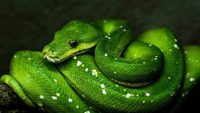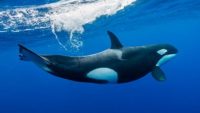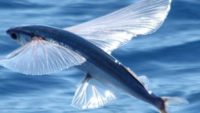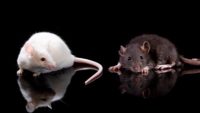By Dr. Carrie John Recently published research discusses the synthesis of a large molecule which folded into a ring pattern and compared it to the folding of proteins. …read more Source: AIG Daily
It’s been known for decades that the hot pools of Yellowstone National Park contain exceptional and robust types of prokaryotic microorganisms called Archaea. Previously known as the archaebacteria, these organisms include methanogens (methane producers), extreme thermophiles (organisms resistant to heat), and extreme halophiles (organisms requiring salt for growth). One species of thermophilic archaea is Sulfolobus that can … More… …read more Source: icr.org
Termites (order Isoptera) are eusocial—animals with an advanced social organization—insects that can number in the millions, producing something biologists call a superorganism. This is defined as a colony of termites having features of organization analogous to the properties of a single creature. These insects have the ability to digest wood due to symbiotic gut-dwelling flagellates, single-celled eukaryotic creatures… More… …read more Source: icr.org
Neo-Darwinism, Neutral evolution, and the ‘Extended Evolutionary Synthesis’ cannot avoid the multilayered complexity of the genome and cell. …read more Source: creation.com
Robotics engineers trying to copy human bipedal locomotion have a long way to go …read more Source: creation.com
By Troy Lacey A recent study was published purporting to explain how snakes lost their limbs, and it revealed some surprising findings. …read more Source: AIG Daily
Why are man-made pills increasingly ineffective in the battle against infections? …read more Source: creation.com
Every person is an important ecosystem for a wide variety of microorganisms. Whether it’s the bacterial collection of coliforms in our large intestine, streptococci in our mouth, or the diptheroids on our skin, it’s the normal flora or normal microbiota. The microbial colonization of our gut, for example, supports the digestion of complex nutritional components and activates anatomical changes of the intestine. This total collec… More… …read more Source: icr.org
By Ken Ham In 1955, more than a dozen strange-looking killer whales were stranded on a beach in New Zealand. Called “type D” killer whales, they were virtually unknown in the wild to science, except in a few photographs and fisherman stories, from that time on. But, as National Geographic reports, scientists have now observed a pod of these whales for the first time. Scientists headed for the dangerous waters off the tip of South America where these whales reportedly patrol the seas. After waiting for a week, a pod of whales finally approached the anchored research vessel. Scientists were [More]
By Ken Ham Order your copy of Glass House: Shattering the Myth of Evolution today! You see, God created organisms to reproduce according to their kinds. Cats produce cats, dogs produce dogs, and elephants produce elephants. But God built tremendous genetic diversity into the DNA of every kind that he made. This allows them to spread out and fill the earth, adapting to different ecological niches. That’s why we can have wolves that thrive in the cold arctic, coyotes that scavenge at the local city dump, and dingoes that hunt on the grasslands and deserts of Australia. They’re all dogs, [More]
The incredible basilisk has an amazing ability that allows it to skim across the water. …read more Source: creation.com
Well-funded YouTube video falls far short in explaining how consciousness evolved …read more Source: creation.com
Recent headlines claim, “Scientists Have Witnessed a Single-Celled Algae Evolve Into a Multicellular Organism.”1 In reality, the experiment showed that nothing more than a crude clumping together of individual cells had occurred. A new multicellular organism was not created, nor was any real evolution observed. One of the major hurdles in the grand story of molecules to man evolution is how life… More… …read more Source: icr.org
A new study by NASA scientists has just been published where researchers did nothing more than convert a pre-cursor chemical into a single type of amino acid. Despite the simplicity of this experiment and the lack of anything helpful to evolution being found, the popular media exclaimed that the scientists were able to “recreate the ‘origins of life’ and the results are shocking.”1,2 In reality, the only t… More… …read more Source: icr.org
The amazing changes in a new born baby’s circulation …read more Source: creation.com
Evolutionists claim that an eight-letter DNA alphabet called hachimoji allows for more varied evolution of life, but simple science shows otherwise. Read More
One of the most complex biochemical processes in God’s creation is the ability plants possess to take in carbon dioxide and water and, with the aid of sunlight, turn it into energy-rich sugars. Most of us learned about this amazing process called photosynthesis in school. It’s designed to be the route by which virtually all energy enters Earth’s ecosystems. If you have studied photosynthesis, you can appreciate ju… More… …read more Source: icr.org
Can random DNA sequences be a source of evolutionary novelty? …read more Source: creation.com
Beetles (order Coleoptera) are a unique but common group of insects easily recognized by the pair of shiny forewings covering their body. These protective wing-cases are called the elytra. Beetles make up almost 40% of the described insects in God’s creation. If all zoologists stopped what they were doing and investigated just the Coleoptera, they would easily be busy well into the next century. Beetle research … More… …read more Source: icr.org
A chemical reaction allows a tiny creature to stand out in the dark. …read more Source: creation.com
By Dr. Don DeYoung Flight engineers have discovered another source of inspiration—creatures of the sea! …read more Source: AIG Daily
German researchers described rare bone cancer in a Triassic reptile fossil found in limestone near Velberg, Germany. The find reignites conversations about the origin of diseases and ultimately of life. The team published micro-computed tomography (micro-CT) scans of the creature’s femur in the journal JAMA Oncology.1 It showed the insides of the enlarged region and confirmed the haphaz… More… …read more Source: icr.org
To the first Europeans to settle in Australia, it looked like a badger. But the creature-a godsend to shipwrecked sailors-turned out to be something very different. …read more Source: creation.com
By Ken Ham The headline of a Order your copy of Glass House today! Many people believe there’s an incredible amount of evidence for evolutionary beliefs. But most of this so-called evidence doesn’t actually support evolution the way that it is claimed to. We detail this finding regarding many common evolutionary arguments such as chromosome 2 fusion, the horse sequence, whale evolution, and so much more in our brand-new book Glass House: Shattering the Myth of Evolution. Glass House features chapters from a powerful team of credentialed scientists, researchers, and biblical apologists as they take on the pillars of evolution. [More]
The idea that the samurai face on the Heike crab was designed by natural selection isn’t true. …read more Source: <a href=https://creation.com/a/13257 target=_blank title="The Samurai Crab” >creation.com
Answering genetics questions from our readers. …read more Source: creation.com
Why this is an important issue for Flood geology. Read Article












































